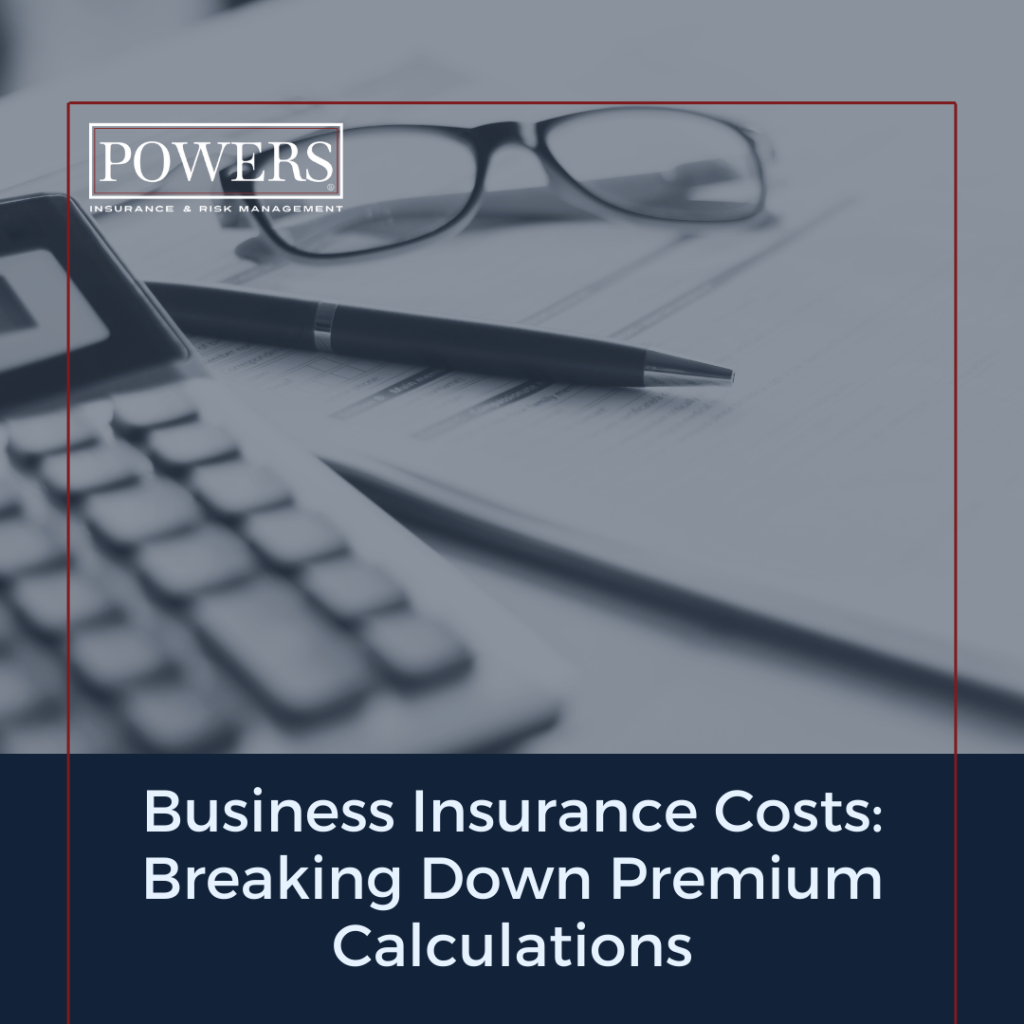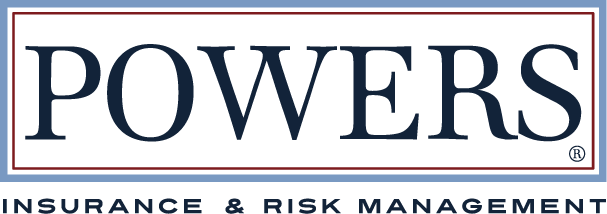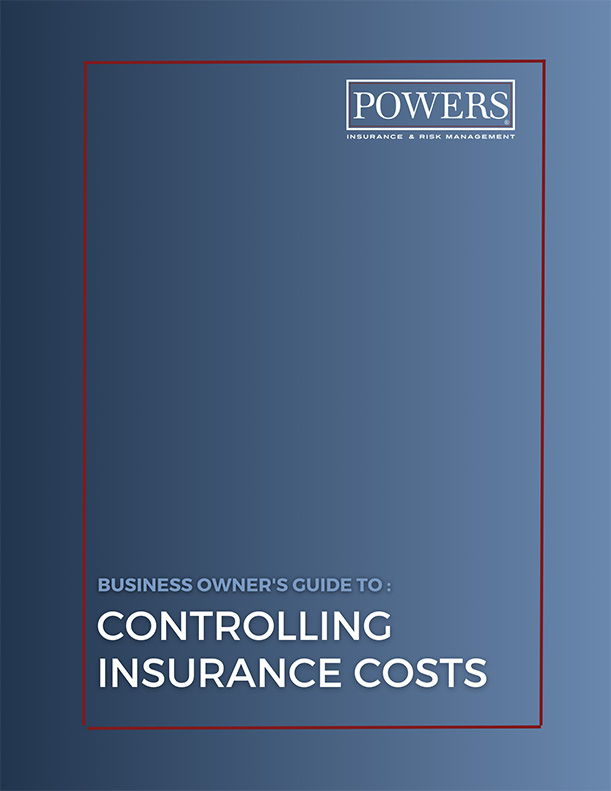A recent survey by Next Insurance found that 96% of business owners didn’t achieve a passing grade when quizzed about basic insurance knowledge.
This isn’t surprising. We expect business owners to be experts in their industry and business strategy, not insurance. But when it comes to understanding your insurance costs, you don’t want to be left in the dark.
How much does business insurance cost? How do insurance carriers calculate your business insurance premium – and how can you influence those costs while still protecting your business?
At POWERS Insurance, we help clients answer that question every day and we’re here to answer it for you. First, we’ll dive into the factors that impact annual premiums. Then, we’ll review strategies to influence those factors and save money on your business insurance over time.

Factors that influence your premiums
There are many factors that impact your insurance premiums. Insurance carriers have developed models to predict how much insuring your company will cost them, and price your policies accordingly.
Here are the most common factors that influence your premiums:
Industry risks
Different industries pose varying levels of risk. High-risk businesses like construction companies typically have higher insurance costs than professional services.
Claims history
Insurance providers look at the frequency (how often) and severity (how serious) of your company’s claims when determining premiums. Frequent claims, or even a single claim of high value, will likely increase your premium.
Business size
Larger businesses generally have higher insurance costs due to their increased property value and exposure to the general public. Your carrier may consider factors like revenue, payroll, and total assets when determining your premium.
Location and property type
Being located in an area prone to natural disasters or high crime rates can impact your premium. Costs could also increase if your property is a historic, uniquely constructed building or poses some other specific hazard.
Employee count and turnover rates
For coverages like workers’ compensation insurance and employment practices liability insurance, more employees generally mean an increased likelihood of covered claims. High turnover can increase your risk of a safety incident.
How your premiums are calculated
A lot goes into your premium calculation. It incorporates the business information above and a few other factors:
Deductibles and coverage levels
These policy options will affect your premium. Choosing a higher deductible (the part of claim costs you agree to pay before your coverage kicks in) can lower your premium. Choosing a higher coverage level will increase your premium – you’re paying for more protection.
Experience modification rate
The e-mod is a factor used in determining workers’ comp premiums. It compares your claims history to the experience of similar businesses in your industry.
If your experience is better than average, your e-mod is less than 1.0. Therefore, incorporating it into your premium calculation will lower your premium. A worse-than-average claims experience gives you an e-mod higher than 1.0, increasing your premium. For example, a 0.85 e-mod typically results in a 15% discount.
Loss control programs
Some insurance providers offer discounts or incentives for policyholders with robust loss control programs. Some examples are safety policies and training, regular risk assessments, and equipment maintenance protocols.
What is the average cost of business insurance?
Because businesses incur a wide range of insurance costs, a discussion of average costs will only get you so far when determining what you might pay.
However, you can use the below average rates as a starting point, understanding that your own costs will be different based on all the factors we’ve discussed.
Average business insurance premium costs
Source: Insureon
| Coverage type | Average annual cost |
| General liability insurance | $504 |
| Commercial property insurance | $804 |
| Workers’ compensation insurance | $540 |
| Inland marine insurance | $348 |
| Cyber liability insurance | $1,680 |
| Builder’s risk insurance | 1-5% project budget |
| Commercial auto insurance | $1,764 |
| Directors & officers insurance | $1,656 |
| Employment practices liability insurance | $2,664 |
| Professional liability insurance (E&O) | $732 |
| Product liability insurance | $504 |
| Excess liability insurance | $480 |
| Liquor liability insurance | $660 |
Keep in mind that every business does not need every type of policy. Some types of insurance, like employment practices and cyber liability, are more common for larger companies – making the average cost across companies higher.
How much does business insurance cost? Your agent can give you a realistic projection of your costs when they present business insurance policy recommendations to you.
Insurance cost FAQs
Why did my premium increase?
We get it. No one likes seeing an unexpected premium increase. There are a variety of reasons your premium could increase. Here are some of the most common types of reasons:
- Claims history. If you’ve had an increase in the frequency or severity of claims, your insurance carrier will assume this pattern is likely to continue and adjust your premium accordingly.
- Changes in operations or risk profile. Changes to your business like expanding into new markets, introducing new products, or undertaking riskier activities may change the underwriter’s assessment of your risk.
- Legal or regulatory factors. Your premiums may be influenced by factors beyond your control. Changes in laws and regulations could increase the potential for claims, leading your carrier to adjust premiums accordingly.
- Industry trends and market conditions. If the overall risk landscape for your industry has worsened, your premium might go up. Market conditions like changes in competition or catastrophic events can also impact your rates.
Can I negotiate my insurance premiums?
In general, no, a client cannot negotiate the cost of their premium. It’s based on the carrier’s underwriting guidelines and the underwriter’s expert assessment of your risk. However, an independent agent can help make sure you get the best rates for your risk in a few ways.
Your agent can help identify and showcase what makes your business a unique risk in terms of loss control practices and risk management beyond the basics. They can use their expertise to properly position your business to the underwriter, securing you the best pricing.
In addition, an independent agent can help you compare different providers and find the most competitive rates and coverage terms.
How can I lower my e-mod?
As a business owner, you have the power to positively influence your e-mod. Since the e-mod is a reflection of your claims experience, you can improve it by preventing incidents and reducing claims costs. Here’s how:
- Implement a workplace safety program that includes training, policies, and procedures.
- Encourage employees to report hazards and near misses, and give them several different ways to do so (online, in person, paper form).
- Collaborate with your carrier and claims adjuster to manage claims efficiently, including directed medical care if you have the option in your state.
- Establish a return-to-work program that gives workers light-duty options while they recover from a bodily injury.
- Conduct regular exposure analysis and loss run reviews to identify areas for improvement.
How to lower your premiums: 3 ways to save money
How much does business insurance cost? Your business insurance costs largely depend on the factors we’ve discussed – but there are strategies you can use to influence those factors and make sure you have the best insurance policies for your goals.
1. Proactively manage risk and prevent losses
Your claims history impacts your insurance costs. Thus, one of the best ways to control costs is by preventing claims with a proactive risk management program. Here are some of POWERS top strategies:
- Conduct a comprehensive risk assessment to identify risks and vulnerabilities in your business model.
- Strategically prioritize risks and implement mitigation tactics.
- Perform regular inspections and maintenance to identify hazards and prevent incidents.
- Transfer risk to your carrier with the right insurance policies, and to subcontractors with airtight contracts.
2. Create a workplace safety program
Safety incidents lead to costly claims. They involve not only medical expenses, but often lost income for the injured worker and business property damage too.
Creating a safety program and preventing these incidents can reduce your insurance costs. Here’s how:
- Build a safety culture and encourage employees to put safety first.
- Document your safety policies and procedures.
- Provide regular safety training to employees.
3. Partner with an independent agent
Captive agents work with one carrier – that means no shopping around and no negotiating power. An independent agent is not tied to any single carrier and can help you get several quotes to find your best options.
Remember, the best policy a few years ago might not be the best fit today. Both your business and the insurance landscape can change through the years.
For this reason, your agent should help you regularly assess the types of business insurance you carry, and “shop” those policies every few years to make sure you’re still getting the best value.
Save money and protect your business with integrated risk management
How much does business insurance cost? When it comes to your insurance costs, things aren’t out of your hands. With the right strategies and advisors, you can develop a plan to control your costs long-term.
We have this conversation with our clients every day. And we’ve developed a proprietary, systematic approach to helping them manage risk to control costs and grow their businesses.
It’s not about finding the cheapest policy. It’s about understanding your business operations and tailoring risk strategies to your goals.
In other words, we’re in this partnership for the long haul. Find out how our POWERS risk experts can help control your insurance costs with a free 30-minute consultation.





